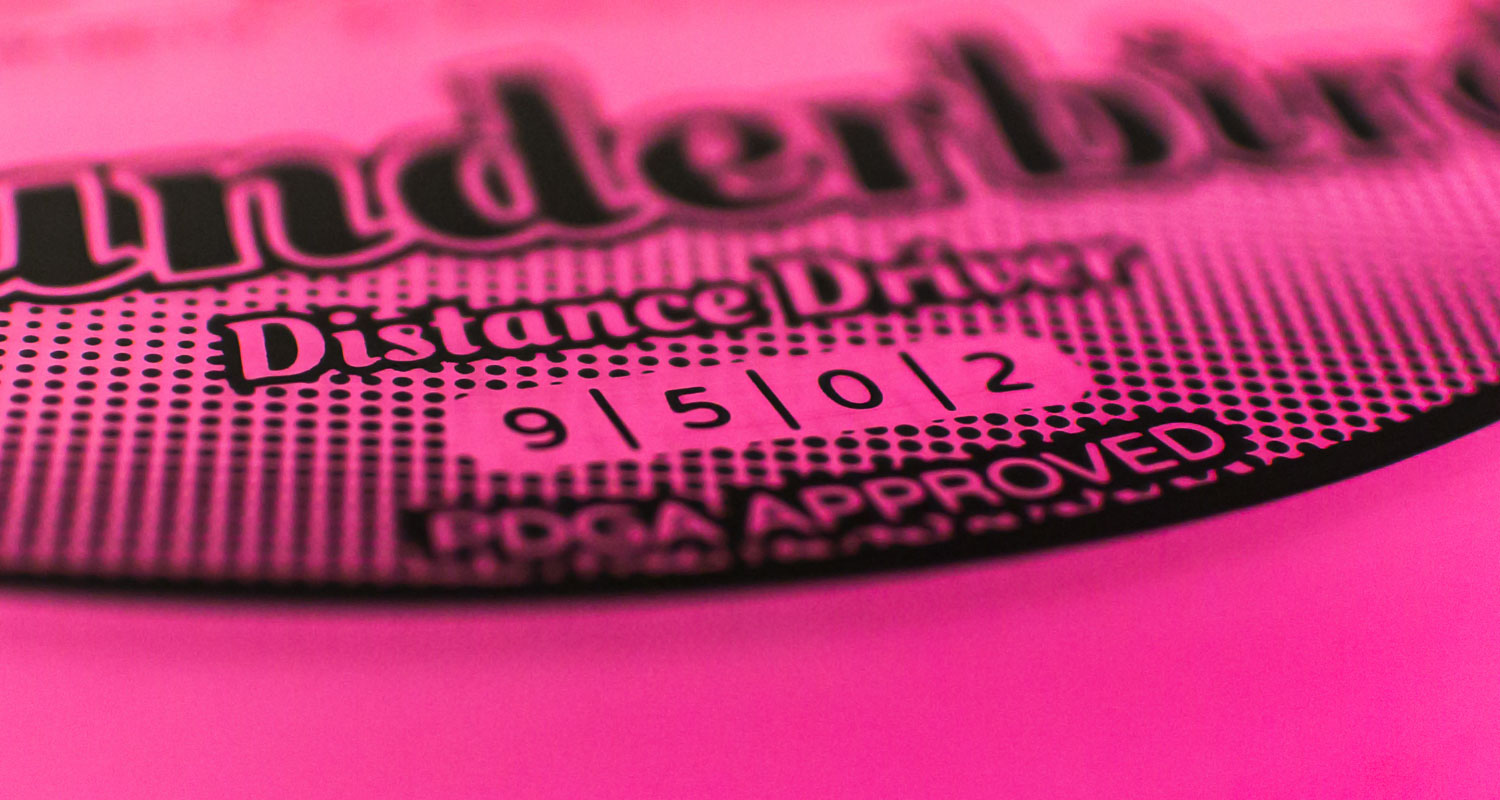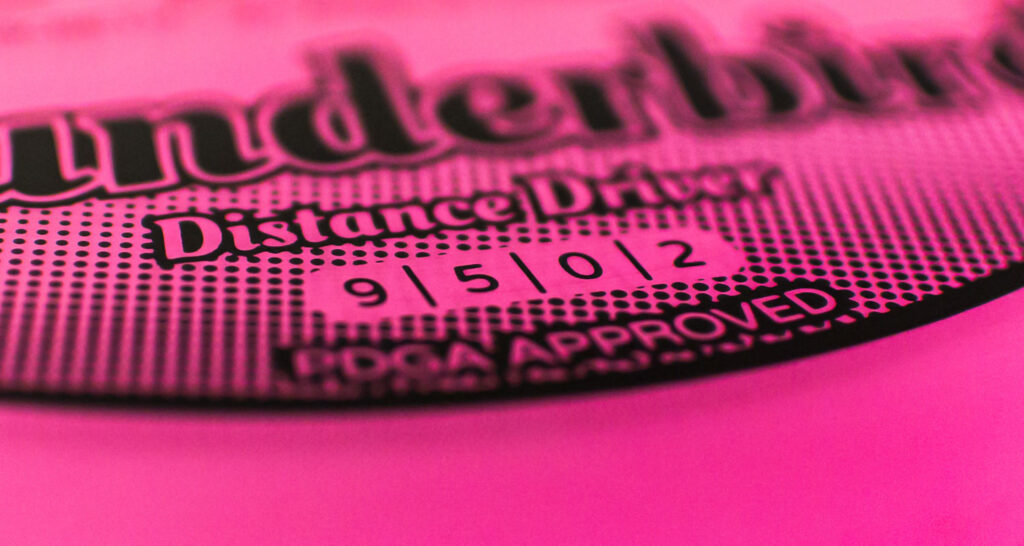
Innova, the developer of the modern disc golf disc and a major disc golf manufacturer, developed the disc golf flight numbers to define how disc golf discs roughly behave. Most other manufacturers have also adopted this way of defining disc golf discs. Although the flight number method developed by Innova is not a scientifically accurate way of telling the flight characteristics of a disc, it gives a fairly good idea of the flight and is well established practice in disc golf.

Disc golf flight numbers are divided into four categories: speed, glide, turn and fade. These numbers are used by most manufacturers to describe the flight of the disc. We explain the categories of flight numbers in more detail below. All our sales staff in our stores are experts in disc golf and will be happy to help you. So you don’t have to learn this theory to get the right disc golf discs for you. Of course, understanding the characteristics and differences between disc golf discs will help you to learn and improve in the sport.
Tip: you can use our advanced product search to browse frisbee golf discs by their flight numbers.
Disc Golf Flight Numbers: Speed, Glide, Turn, and Fade
Speed, Values 1-14
Disc golf discs are rated for speeds from 1 to 14. The higher the number, the faster the disc, i.e. in the lower and more air-penetrating it is. Putters are at the lower end of the flight range (1-3), mids or approach discs in the middle range (3-5), followed by fairway drivers (6-8) and finally drivers (9-14). The numbers, like the whole system, are indicative and should not be interpreted too closely.
It is worth noting that in order to throw the fastest drivers as described by their flight numbers, you have to be able to throw really hard. For this reason, we do not recommend the fastest discs for beginners. When thrown slowly, all fast drivers behave more overstable than their flight numbers indicate. Speed 14 drivers are very shallow and have the longest wing length allowed by PDGA technical rules. The fastest disc golf discs have less drag than the slower discs. Theoretically, faster discs are more likely to fly better into headwind, but they are also more prone to throwing angle errors. Slower discs need to be thrown harder, but are easier to control.
Glide, Values 1-7
Glide describes the ability of the disc to maintain altitude during flight. Well gliding discs are generally best for beginners, because they fly easier and also further. High glide discs are also more prone to wind. Discs with less glide are generally more controllable when there is a lot of wind.
Turn, Values -5-1
The stability number of a disc golf disc describes its tendency to turn over or tilt to the right (in the case of a right-handed backhand throw) at the beginning of the flight. Turn is also referred to as high-speed turn. For this reason, stability value is most crucial during the initial part of the disc’s flight.
A disc with a stability of +1 resists what is known as turning over the most, while a disc with a stability of -5 will turn over the most. Discs that turn more are easier for beginners to throw and are also called understable discs. If a disc turns over too much during a throw, it is an undesirable trait, and it’s advisable to try a disc with a higher stability value. Discs that turn less are more accurate in windy conditions and are also called overstable discs.
Skilled players can utilise the stability value of a disc for various throwing lines. Rollers are one way to easily utilise discs that turn over quickly. Discs with low stability values, ranging from -3 to -5, are well-suited for rollers.
Fade, Values 0-5
Fade describes the tendency of the disc to turn left (for a right-handed backhand thrower) at the end of its flight. A disc with a fade of 0 will fly the straightest. Especially for beginners, it’s easier to throw discs with low fade values straight. A disc with a fade of 5 will turn sharply at the end of its flight. Discs with high fade values fly more predictably into headwinds, and such discs can be more easily used for high hyzer shots.
How to Consider Disc Golf Flight Numbers When Buying a Disc?
Don’t focus too much on flight numbers. It’s best to try out a few different discs yourself and use the ones that feel best for you. If you ask our store experts, they will gladly assist you and recommend disc golf discs that are sure to be good choices. You can also call any of our stores for guidance.
Tip: Also, read our article on Understable and Overstable Disc Golf Discs.